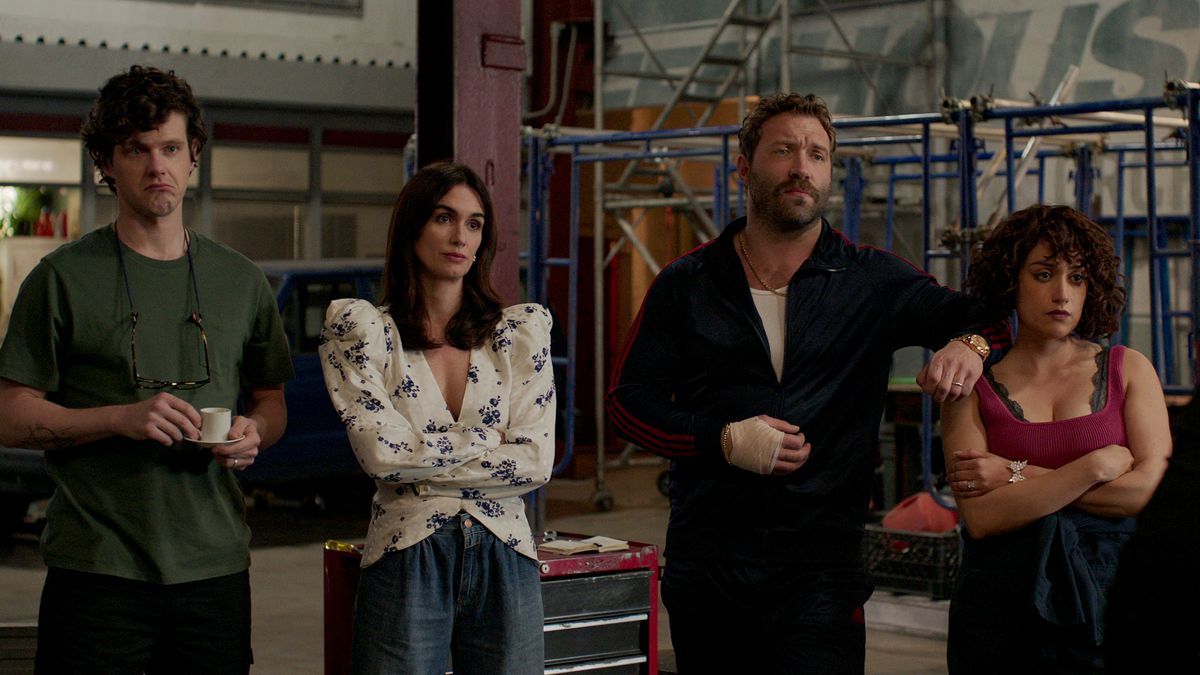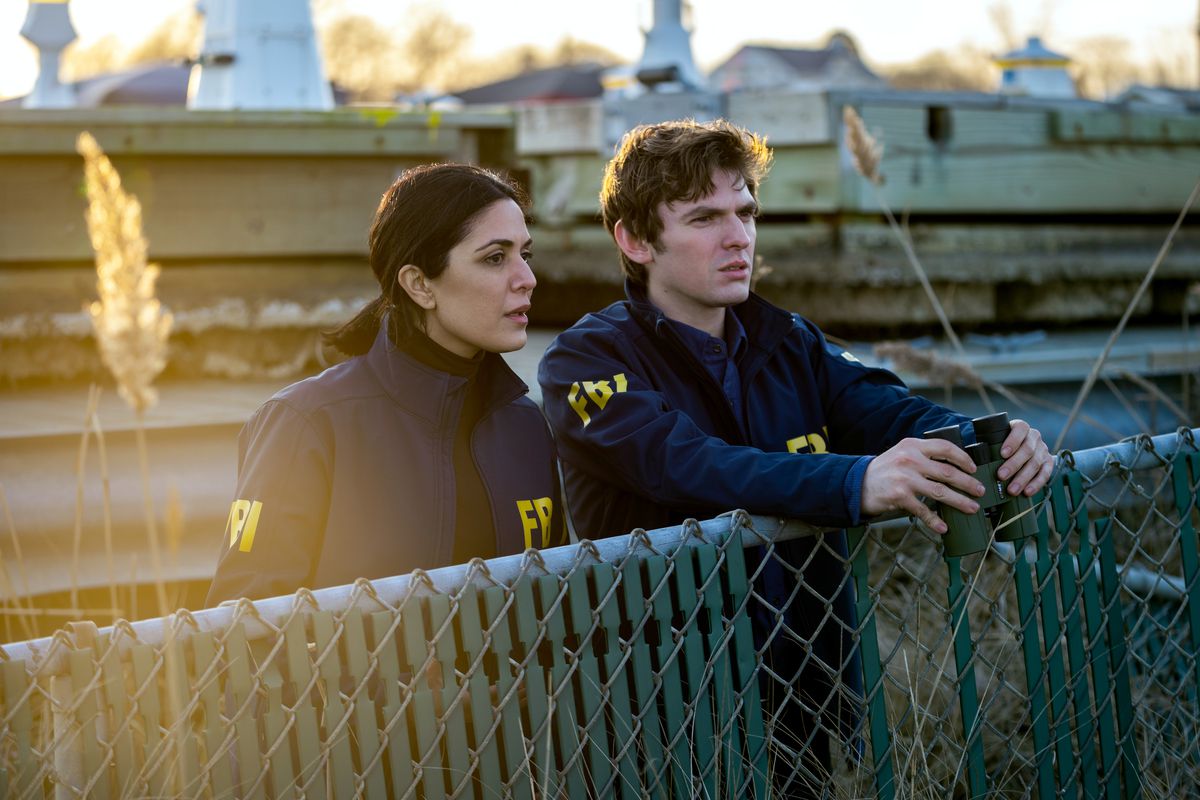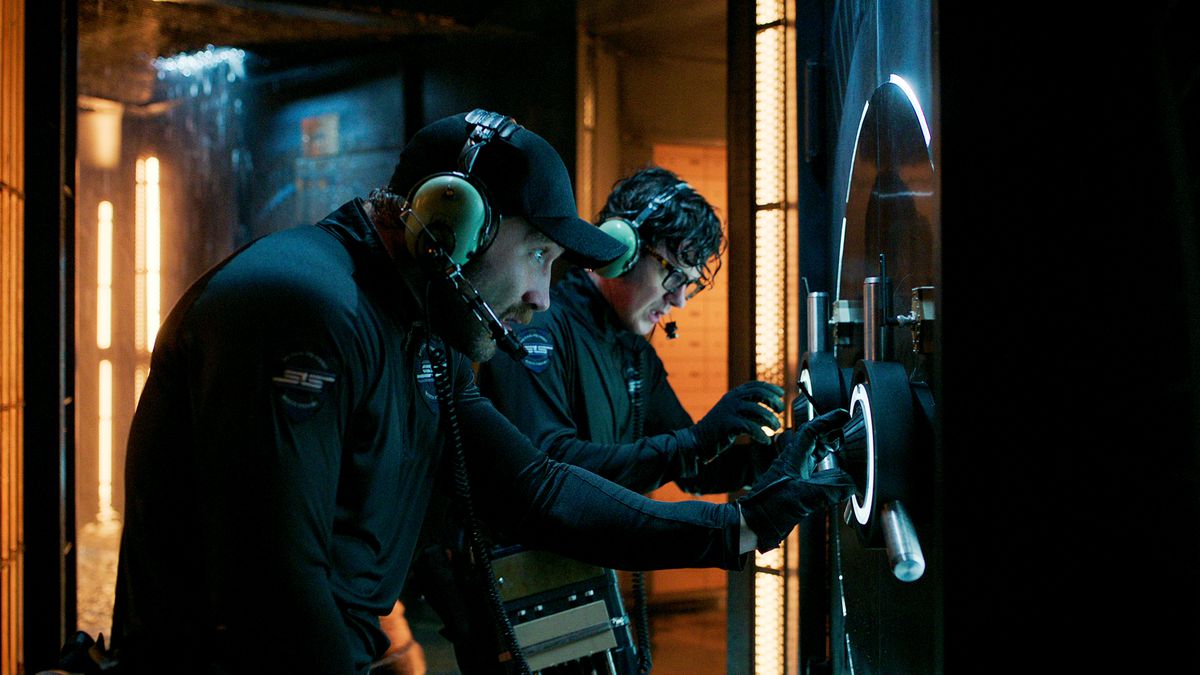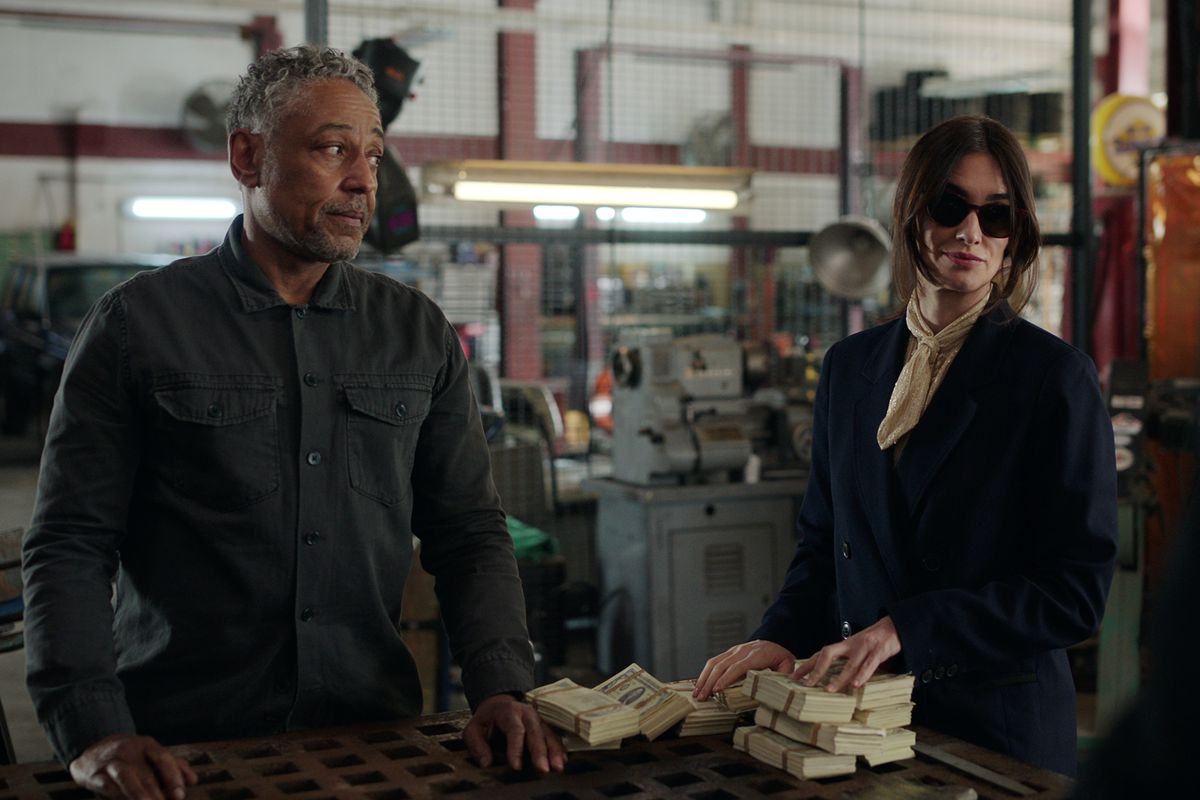It’s tempting to believe a great heist story, whether it’s in a movie or a series, is like great jazz: A collection of seemingly disparate parts, each excellent but incomplete on their own, get combined together to create something transcendent. At least, that’s the hope behind Netflix’s new heist series Kaleidoscope, which gives each viewer a randomized episode order. Unfortunately, the show never really makes a song worth listening to, and mostly feels like a din of out-of-tune instruments, no matter what order they’re in.
Kaleidoscope, created by Eric Garcia (Repo Men), follows Leo Pap (Giancarlo Esposito, who seems to pick a new voice at random at the start of each episode), a former thief looking to return to the life for one last job.
Depending on the order of your episodes, when we meet Leo he’s either about to break out of prison, or he’s dead set on revenge via the biggest job he can think of: hitting his former partner who now runs a security company with a high-tech underground vault. To pull off the job, Leo gets together a crew that includes Ava Mercer (Paz Vega), Judy Goodwin (Rosaline Elbay), Stan Loomis (Peter Mark Kendall), RJ Acosta (Jordan Mendoza), and Bob Goodwin (Jai Courtney) — I’d describe the characters more, but the show doesn’t bother, so why should I.

But again, the order you learn about any of this is mostly up in the air. You might start with an introduction to the crew, or just to Leo. You could get a preliminary heist as your midpoint, or you could get several episodes worth of flashbacks about Leo and his former partner, or the stunningly incompetent FBI agent who’s chasing him and his crew. Even when the show is layering on extraneous details in these episodes, they really only amount to relationship drama between two or more members of the crew. Rather than any kind of actual personality for the characters or anything else that might make you care about them, we get first-day-of-class fun facts like one character liking the play the drums or another wanting to retire to the beach.
One somewhat interesting note about the randomization, though, is that there do seem to be a few limits on which episodes can appear where, and everyone ends with the same two, the heist and its aftermath.
While this format is almost interesting at first blush, its problems become clear with a little more thought: There’s nothing fundamentally interesting about learning things in a random order. Kaleidoscope’s basic assumption was wrong the whole time. Heists aren’t jazz, they’re clocks. There’s no improv, just carefully crafted precision, and problems only experts can solve.

Non-linear storytelling is a hallmark of the heist genre, particularly for the slightly more modern version of it, like the Oceans movies or Reservoir Dogs. But for those narratives to work, they need clockwork precision. Just like a great heist, a great heist movie requires perfect timing, giving out character reveals at just the right moment, knowing when the story needs a new complication, and throwing shocking twists in at exactly the right moment for maximum audience impact. Kaleidoscope’s gimmick renders that kind of perfectly-guided fun almost impossible.
But it’s not like the release format is the fundamental issue of the show either: it’s boring, no matter what order the episodes came in.
Rather than slow-playing the build-up of Leo’s crew, Kaleidoscope throws them all together quickly, and mostly over the course of just one episode — which proves not to be a sign that the group-dynamic is the highlight of the show, but rather a vast miscalculation about the cast of characters and their chemistry.
On their own, each character is flat and boring, but together they turn into a mess of yelling and confused motivations. Worst of all, it’s not even clear why any of them are here. We’re told over and over again Leo Pap is a master thief, but all we see is him bungle a few low-level jobs earlier in life. Meanwhile, every side character just seems like more trouble than they’re worth, with most of them feeling like they’re at best one Google search smarter than the audience about everything from safe cracking to explosives.

And nothing about the show or its characters has even the ounce of the charm it would take to make following them through this byzantine shuffle of episodes anything other than a drag. Even the heist itself, which has an hour devoted to it but still mostly manages to be about walking from one place to the next, can’t find a way to be exciting or slick. It’s a series of plans we haven’t seen discussed or practiced, with almost no twists in sight — which is a waste, considering this episode seems to always play out as the penultimate one of the series. The fixed point means the show knows exactly what information we’ll have going in, so it could be full of twists that contextualize each episode or our understanding of the group or the plan. Instead, it’s yet another missed opportunity for Kaleidoscope.
None of these glaring issues can be attributed to the randomized order. They can all be chalked up to old-fashioned bad TV. Experimenting with release strategy isn’t fundamentally a bad thing. Netflix’s binge model still works for certain specific shows, but on the whole it’s gotten stale. And word-of-mouth hits like Severance and White Lotus (or half the world waiting on bated breath for the next episode of House of the Dragon) are all good indicators people don’t mind waiting a week to see what happens next. But if Netflix insists on continuing to release most of its shows all at once, why shouldn’t a few of them experiment with their form in a way that could get people talking?
And it could be perfect for another genre. It’s easy to see how a semi-random order for a mystery series could lead fans to comparing notes halfway through, or how a complex drama told from multiple perspectives could alter our sympathies for one character or another depending on who we got attached to first. All of these are interesting ideas, but they need the specificity of those genres to help them function.

More than just rides to be taken on, great mysteries turn into puzzles for the viewer. A mystery story leaves clues for us to solve, letting us nip at the heels of fiction’s greatest detectives while feeling like the playing field is at least somewhat even. A heist is exactly the opposite. It relies on characters who know more than we do, who hold back the ace up their sleeve, obscured from even the audience, for just the perfect hand.
Kaleidoscope’s pacing feels nonsensical, which might seem like it’s the obvious fault of the random order. But, given that’s true for each of the show’s eight individual episodes, maybe that isn’t the result of the random order, but the show it’s pasted onto. Maybe this show just doesn’t know how to tell a story. Whether it’s big or small; in order or not.
It feels like the intended effect of Netflix randomizing Kaleidoscope’s episodes was to compel friends to urge each other to continue the show so they can reach the next big episode or moment. But the show’s big moments never come, and by the time you realize the show is random, or why that matters, your friends have probably turned it off long ago. And honestly, good for them.
All eight episodes of Kaleidoscope season 1 are now streaming (in whatever order) on Netflix.
- SEO Powered Content & PR Distribution. Get Amplified Today.
- Platoblockchain. Web3 Metaverse Intelligence. Knowledge Amplified. Access Here.
- Source: https://www.polygon.com/23531210/kaleidoscope-netflix-review-heist-show-random-episodes-cast



